Hi, friends! I keep telling you all I’m going to start blogging on my Substack in addition to my monthly newsletter and then I don’t do it. Well, today I’m finally doing it! That said, if you prefer to hear from me only once a month for event updates, please check your subscription settings and make sure you are only opting to receive my newsletter and not blog posts. ~Diane
Yesterday I participated in a plein air (outdoor) painting competition as part of the Town Day festivities in Arlington, MA. The weather was outrageously bad, and I probably would have bailed if it hadn’t been for the fact that this was a by-acceptance event and I was pretty darn happy that my application was accepted.
I have no idea how many people applied. Maybe everyone who applied was accepted. Maybe there weren’t many applications because the event was water media and dry media only, which ruled out all the oil painters I see at my plein air group. Whatever the case may be, I was flattered to be among the nine accepted artists, so despite the forecast of steady rain and temperatures in the upper fifties, I packed my kit and drove to Arlington. I guess the other artists felt the same way, as only one person dropped out due to weather, leaving eight of us in the competition, just like an episode of Landscape Artist of the Year! (Side note: Landscape Artist of the Year is my new favorite TV show. I’ve binged my way through all the episodes on Prime and now finding more on YouTube).
Apparently, before the rain came in, the plan was to have several sites around the garden between town hall and the library with two to three painters per site. When the rain rendered that plan impractical, things shifted to plan B: We could paint in the tent where our works would be displayed at the end of the day or in a smaller tent next to it, or we could go inside Town Hall and do an interior.
Five us opted for the big tent, one person went inside, and two others set up in the small tent. Given the challenging conditions, the organizer told us that we could go out and take photos to work from if we wished, but we all hunkered down and painted views we could see from the tent, truly keeping with the spirit of plein air painting.
The fact is, even in a tent, it was not a great day for watercolor. The cold temperature and humidity meant washes stayed wet a very long time, making layering difficult. The overcast sky meant there were no strong shadows and so there was no real sense of depth in the landscape. I knew this was going to be the case I told myself to be prepared to ditch my usual style and experiment. I tried to take my own advice, but honestly, at the end of the day, I was pretty disappointed in my efforts.
My disappointment had nothing to do with comparison to the other painters. It’s not that I wasn’t there to win or I never thought I could win. That’s not true. While I didn’t think I would be first place or anything, I definitely went in thinking I had the skills to be competitive. I wouldn’t have applied otherwise. But the competition wasn’t what was important to me. All I really wanted was to finish the day with a painting I felt proud of, whether or not it got the attention of the jurors.
For me, the value of an event like this is the camaraderie and the challenge of making an interesting painting out of a subject I might not have chosen for myself. There’s a little voice in my head that says, “If you’re a real artist, you can make any subject interesting.” There’s an implied criticism in this, of course, as if I’m not a real artist if I can’t turn any turd into a masterpiece.
My most successful paintings have been scenes where a composition presented itself and all I had to do was put it on the page. From the summer plein air efforts, for instance, my two best paintings, Nicewicz Farm and Crystal Brook Farm, had views where the actual landscape conveniently complied to good compositional principals.


My least successful paintings were done at Cooks Pond and the Acton Arboretum, locations were the only thing in front of me was trees, trees, trees. No structures to hang my composition on, no focal points. Just green everywhere I looked. Beautiful locations, but scenes I couldn’t turn into interesting paintings.


The fact is, to steal a line from Edward Hopper, I just want to paint light on the side of a house. And when a landscape gives me light on a side of a house, I’m happy and dive right in. And when a landscape gives me trees, I panic. Trees are hard! So much sameness. Where’s the focal point? What is the story?
And what did I decide to paint yesterday? Trees. As you can see from the photo below, I doesn’t look like much. And this is why I’m not a photographer, because in real life, this was quite a pretty little view, even if it does lack a focal point.
Before settling on the scene above, I tried three different compositions I could see from the tent, sketching in thumbnails in black and white. One was of a bench under a tree in front of a window. Another was a bench at the end of a tree-lined path. The third—and the one I choose—was a clump of trees in the garden. There was a large many-trunked tree on the left and a small tree on the right with a twisted, gnarled truck that was pale against the dark foliage of further trees behind. The leaves of the gnarled tree were just beginning to turn red.
I’ve been working on my trees, and I thought I could do a line-and-wash painting in the style of Virginia Hein that might capture the mood of the day. I cropped my composition close in, no sky, to mimic the oppressive weather, and I did a drawing I felt really good about it. And then I ruined it with paint. I consider myself something of a colorist, but I biffed it big time on this one. I wanted the colors to feel like a rainy day, but I couldn’t it right and then I started to panic and overworked it. Turns out that if I want to imitate Virginia Hein I’m going to need a lot more practice!
So I started another painting, same scene, even more zoomed in, only the tree on the left. I fell back to my usual style, ditching the idea of line and wash. And it absolutely came out better than the first mess I made, but it lacked a focal point, so at the last minute, I added some figures in their rain gear. I actually stood there with my camera ready waiting for someone to walk by so I could snap picture as a reference, and thankfully before too long a couple obliged. When I added them to my scene, the proportions were all wrong, but at least I had something in the otherwise empty middle.
It’s not the worst painting I’ve ever made, but I was disappointed by it. I worked for three hours and I all managed was this simple little sketch. I know I am capable of better, and so I let myself down.
After the three very worthy winners were identified and I was getting ready to go home, the organizer went out of her way to tell me how close the judging had been, assuring me that the race for third place was very tight and mine had been a real contender. It was very nice of her to say this, although she didn’t need to. I think she interpreted my frustration with sorrow that I hadn’t been named a winner, but honestly, it wasn’t that at all.
The three winners were objectively the best three works. Art may be subjective, but seriously, the winning paintings were leagues above the others. It was exciting for me to see how skilled artists handled the challenges of the day, and I was happy for the winners. I would have judged it the same way as the jurors, and I wouldn’t put my own work as a close fourth because, in my opinion, it was not close.
But my frustration was only with myself. My artistic ambitions keeping bumping up against my skill level. Back when the skills I needed were watercolor and drawing techniques, I knew exactly what I needed to do to improve: Find good teachers and practice.
Now, though, the skill I need is less tangible. For the past year I have had a simple goal: Stop being such a literalist and paint more expressively. The problem is, after a year of holding onto the goal, I’m still not sure what it means, but I know it’s the key to moving forward.
What I like about Virginia Hein’s work—and why I wanted to imitate her style with yesterday’s scene—is how bold and lively it is. Her lines and brush marks are full of energy. Her paintings are evocative and moody. That’s what I’m after. But my own expressive style won’t end up looking like hers. The types of lines I draw aren’t like hers. They colors I’m drawn to aren’t like hers.
So today, I sat down with my sketchbook to play and see if I could make a more expressive version of yesterday’s composition. I ended up doing two small studies in monochrome using indigo paint, which felt right for the rainy, oppressive mood I was after. They aren’t masterpieces, but they each have a certain boldness.
In the end, I realize what I really need is time, and my frustration is that I can’t get out and paint as much as I want to. Now that the school year is in full swing, I don’t have a lot of time to work en plein air, and when I do, I feel like I have to make something “good” and therefore I don’t do much experimentation. Back in my studio, I’m always happy to experiment, but when I’m in the field, I tighten up. So I suppose that’s my new goal: Take my a spirit of experimentation into the wild and see what happens!
Fellow artists, do you have any exercises that help you loosen up and paint expressively? Tell me in the comments!
Stay creative, friends!

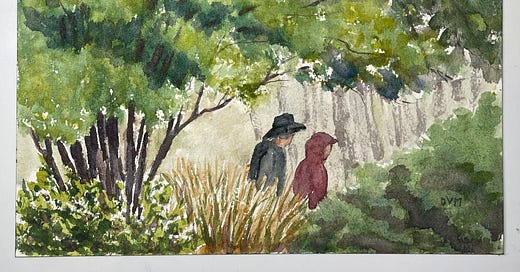

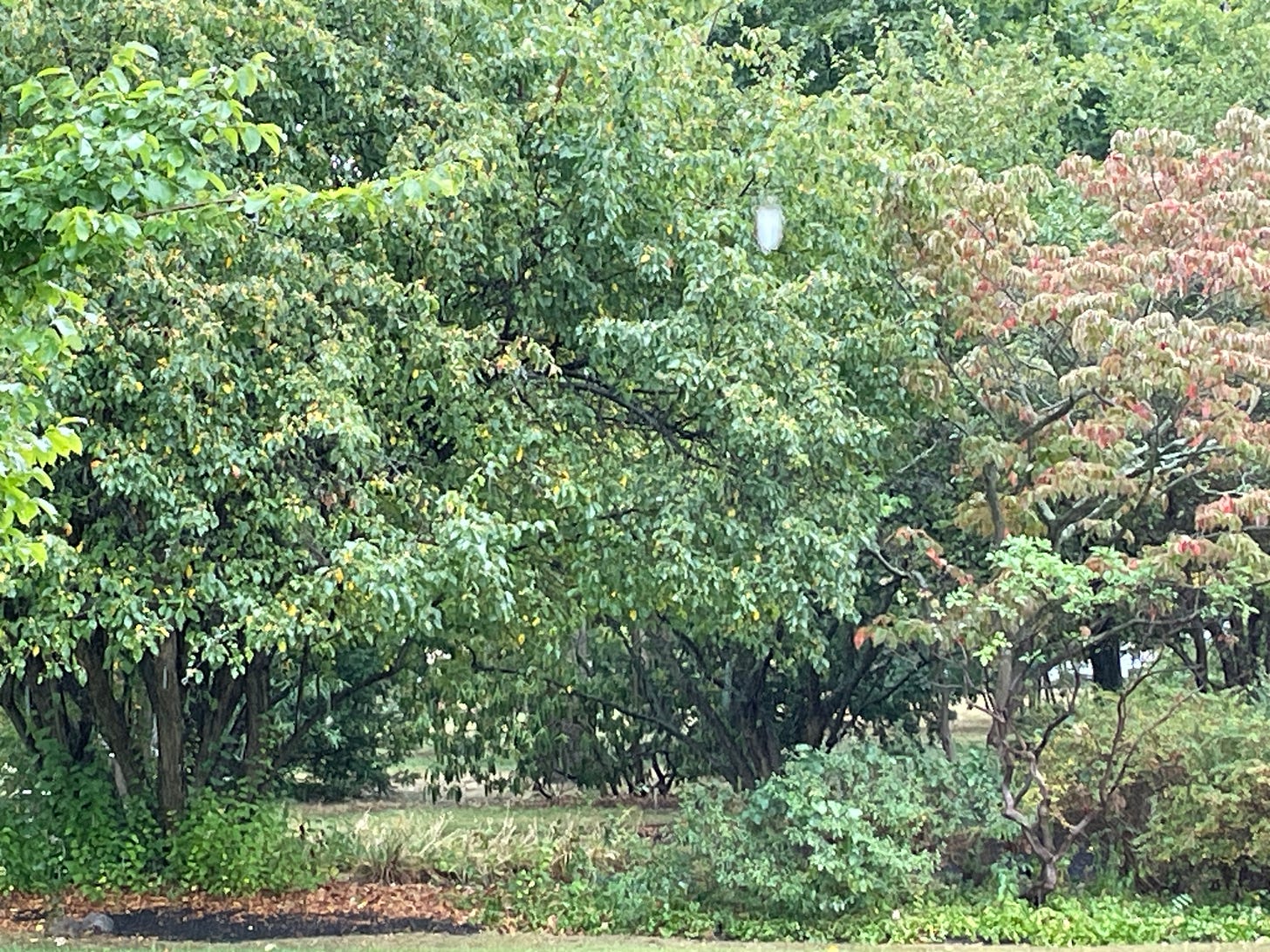
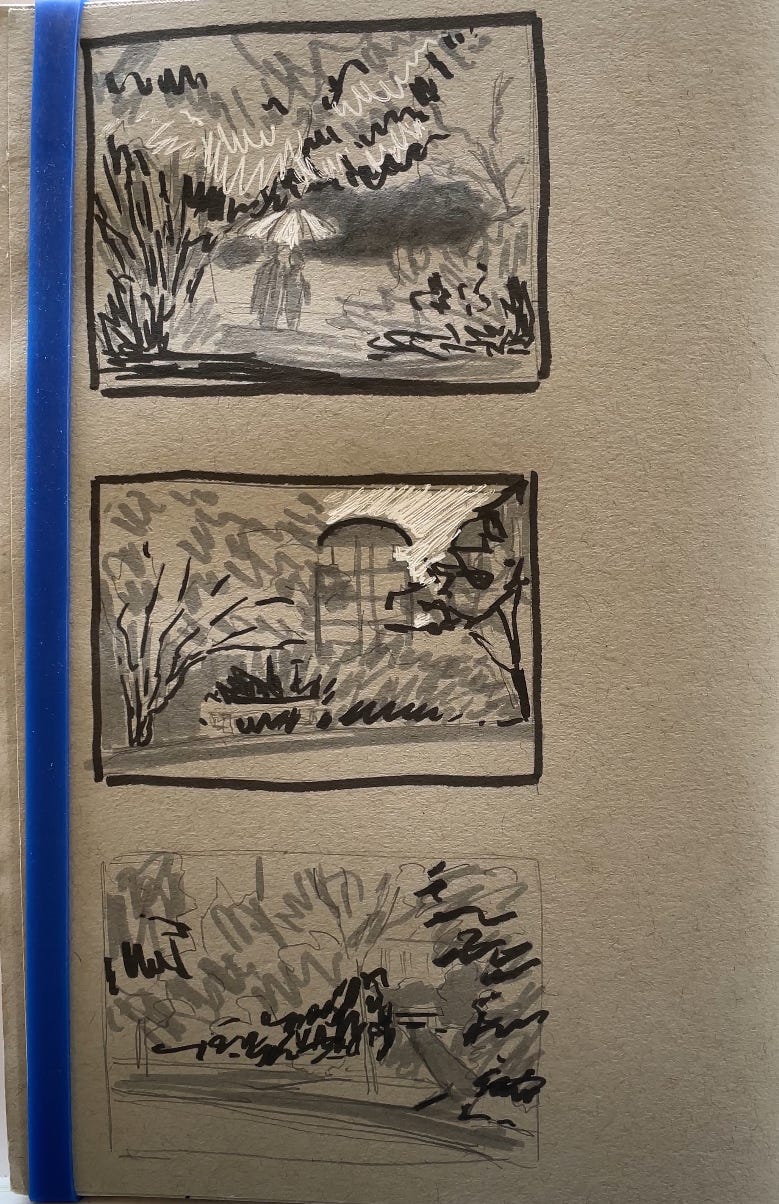
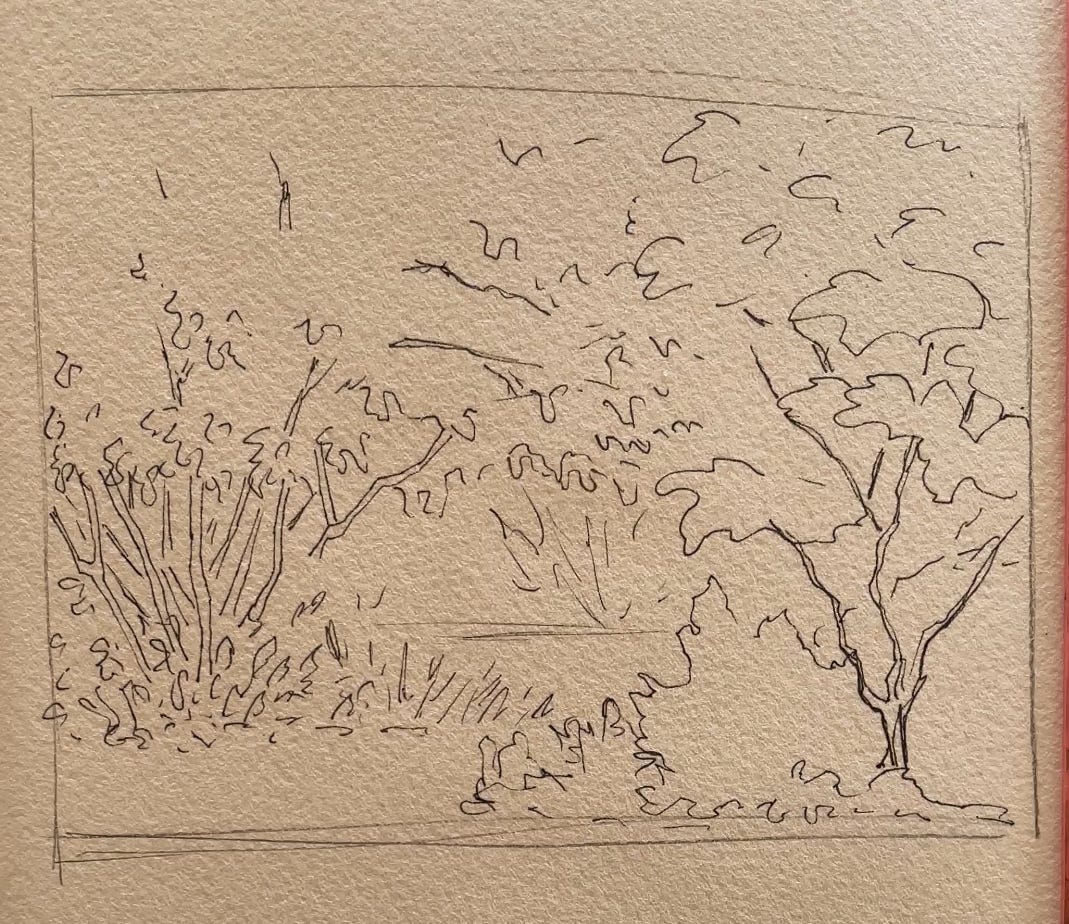


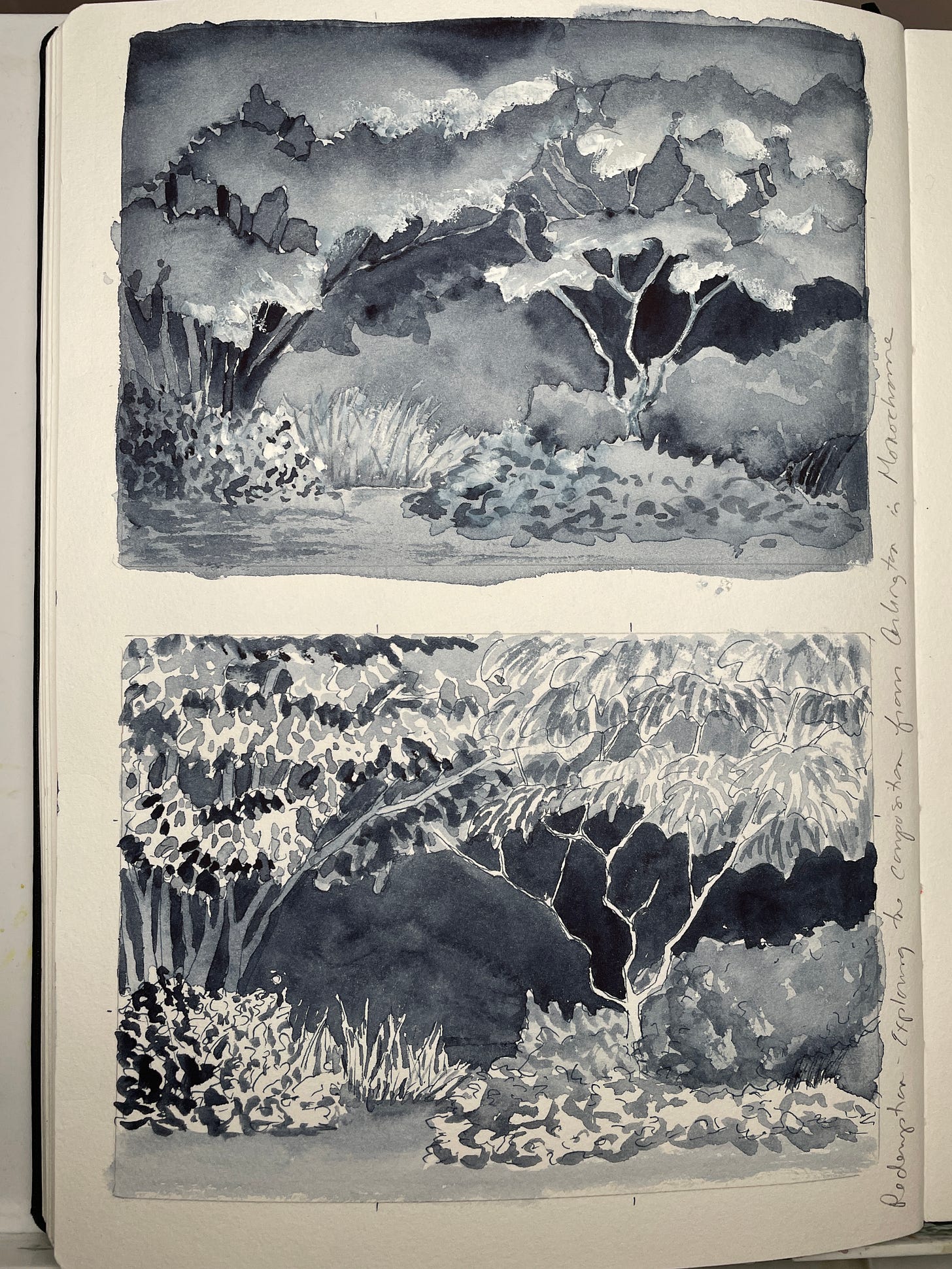
That is the way we grow - to have a vision and then to figure out how to be able to express it but it does have a certain level of frustration built in. Your ink drawings are proof that it was worth the effort!